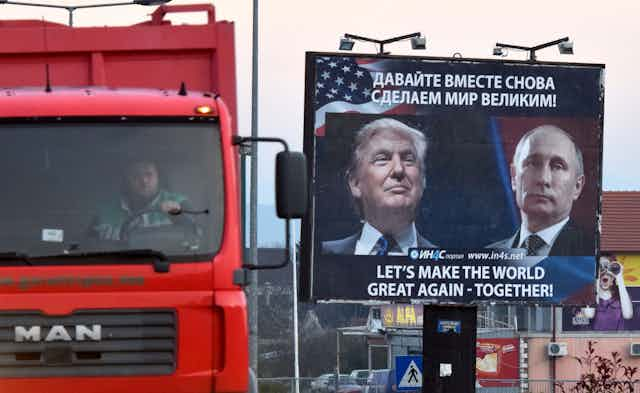Donald Trump recently said in an interview with The Sunday Times that he will start his presidency trusting both Vladimir Putin and Angela Merkel, before adding that such trust might not last long. Given Russian interference in the US presidential elections and the general distrust of Putin in the West, Trump’s excessively pro-Putin statements and his readiness to trust his Russian counterpart naturally created some backlash.
But where states don’t trust each other, personal trust between their leaders is often crucial. And Trump is only proposing to do what many of his predecessors did, both in the Cold War and since: to build a trusting relationship with their Soviet/Russian counterparts. John F Kennedy went to Vienna in 1963 to size up Nikita Khrushchev. Richard Nixon met Leonid Brezhnev in Moscow in 1971, and Barack Obama visited Putin in 2009 for the same reason.
Still, trust is only an effective foreign policy tool if it’s established slowly and carefully. If one leader extends too much trust too early in their relationship with another, the trustee will rarely value it.
In 1964, the new collective Soviet leadership was quick to assure Lyndon Johnson that it trusted him, but its goodwill evaporated after a few months due to what the Soviet leadership saw as Johnson’s duplicity and harmful intentions. Brezhnev’s early trust in president-elect Jimmy Carter withered after Carter repeatedly failed to demonstrate any empathy for the needs of a Soviet leader.
Trust can also prove dangerous if it’s one sided, which leaves the trustor vulnerable to betrayal. Mutual trust requires that actors entertain some affinity for one another and prove themselves able, honest and benevolent.
This is a problem for Trump, who’s already known for inexperience, inconsistency, a volatile temperament, and an inability to see things through other people’s eyes. This is not the character of a trusted partner. Likewise, Putin’s lack of warmth and sometimes open contempt for Western leaders might not appeal to Trump, while his very public machismo and ruthless pursuit of Russian interests are more likely to incite a competitive spirit rather than a co-operative one.
So in the long term, US-Russia relations are likely to deteriorate rather than improve. But should a real crisis arise, the two leaders do still have a trust-based device to fall back on: the Moscow-Washington hotline.
Call me if you need me
The hotline, also known as MOLINK or the Direct Communication Link (DCL), was established in 1963 as a leader-to-leader communication channel to help Soviet-American leaders resolve such serious confrontations as the Cuban Missile Crisis. Originally, the hotline was a written teletype connection, but today Russian and American leaders may choose from various options, including email, phone, and a videolink, to contact each other.
At its birth, the hotline was not only conceptualised as an instantaneous communication device, but also as a last resort that would allow the superpowers to trust the peaceful intentions communicated through it even when all other channels of communication had been contaminated with untrustworthy messages.

The DCL has been used several times since 1963. It was first used in 1967 when, at the outbreak of the Arab-Israeli war, Premier Kosygin contacted President Johnson to inform him of peaceful Soviet intentions.
Four years later, Nixon contacted Brezhnev through the hotline to ensure the interests of Pakistan, a US ally in the Indo-Pakistani war. But while Nixon and Brezhnev at first enjoyed a genuinely trusting relationship, the 1973 Yom Kippur war undercut that trust to the point where Brezhnev, no longer certain of Nixon’s intentions, was forced to use the hotline to make sure an already agreed ceasefire was implemented.
The DCL also helped prevent a confrontation in 1984 when Moscow contacted Washington about a mistakenly launched cruise missile that ultimately crashed in Finland.
Little is known about the hotline’s use in more recent years, but we do know that presidents Obama and Putin conferred over the hotline in April 2013 as part of the effort to tame Iran’s nuclear ambitions. Should an emergency arise, it remains at Trump and Putin’s disposal. But if they are able to trust each other, they may not have to use it at all.

